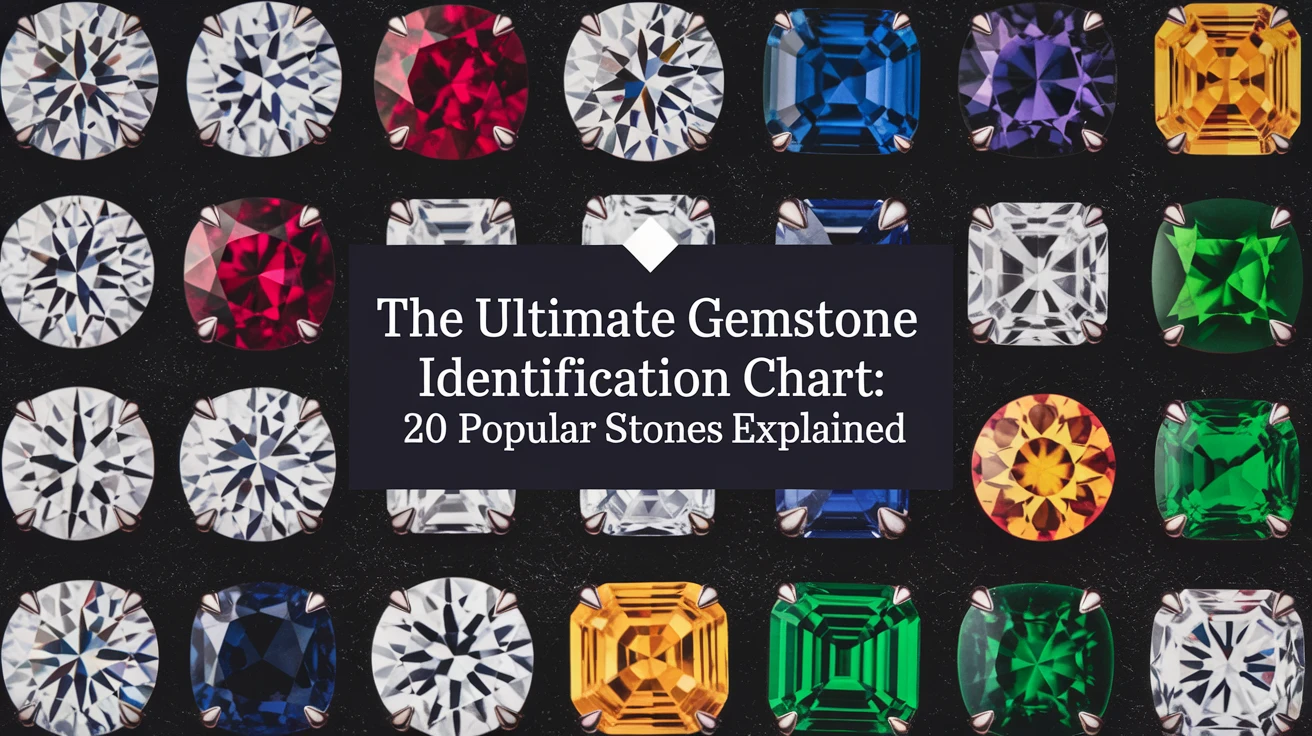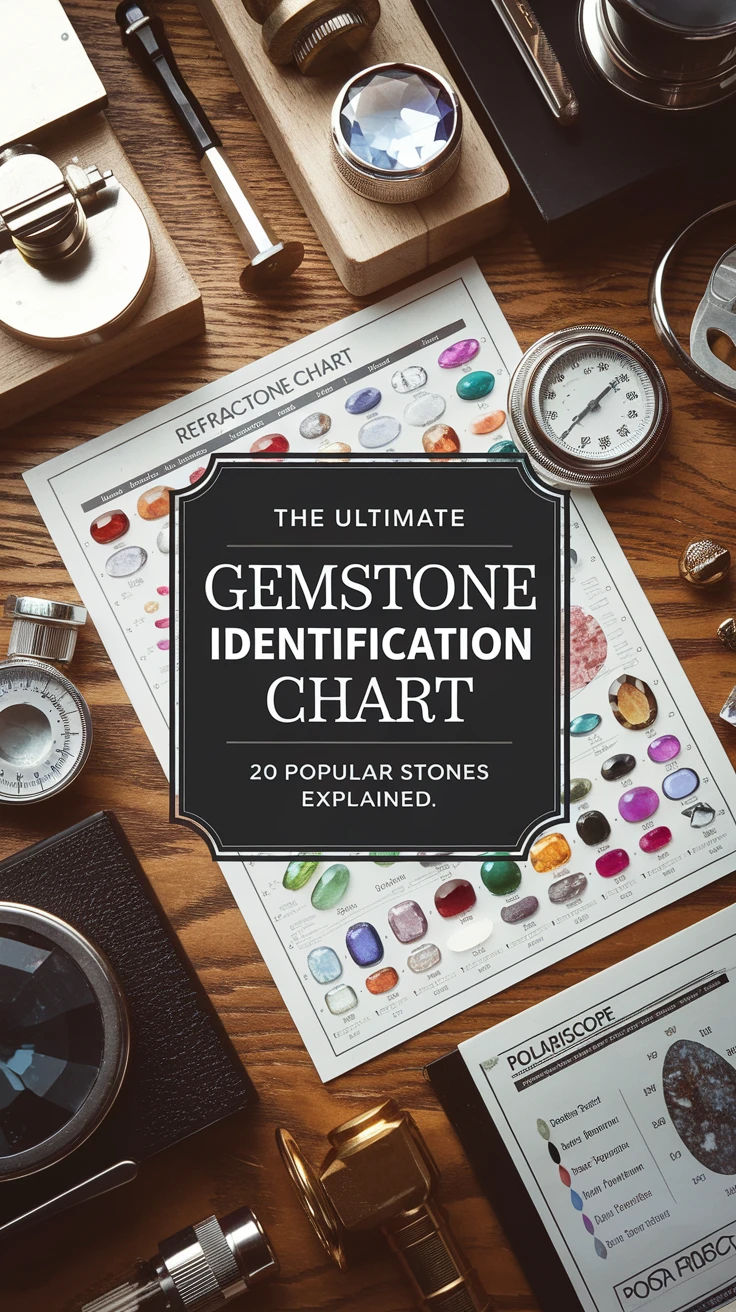
Identifying gemstones can feel like solving a fascinating puzzle. Whether you’re a budding gemologist, jewelry enthusiast, or collector, having a reliable gemstone identification chart is crucial for understanding these beautiful natural treasures. This comprehensive guide will walk you through the characteristics of 20 popular gemstones, providing you with the knowledge and confidence to identify them accurately.
Understanding Basic Gemstone Properties
The foundation of gemstone identification lies in understanding their basic properties. Let’s explore the essential characteristics that help distinguish one gem from another.
– Hardness (Mohs Scale)
– Scale ranges from 1 (softest) to 10 (hardest)
– Diamond ranks highest at 10
– Helps determine durability and wear resistance
– Color and Pleochroism
– Primary and secondary hues
– Color zoning patterns
– Color change properties
– Luster
– Adamantine (diamond-like)
– Vitreous (glass-like)
– Resinous
– Pearly
| Property | Importance | Testing Method |
|---|---|---|
| Hardness | Durability indication | Scratch test |
| Color | Primary identifier | Visual inspection |
| Luster | Surface appearance | Light reflection |
Essential Tools for Gemstone Testing
Before diving into specific gemstones, let’s review the essential tools needed for proper identification:
– Basic Testing Kit
– Loupe (10x magnification)
– UV light source
– Specific gravity liquids
– Refractometer
– Polariscope
– Advanced Equipment
– Microscope
– Spectroscope
– Chelsea filter
– Diamond tester
| Tool | Purpose | Skill Level Required |
|---|---|---|
| Loupe | Basic magnification | Beginner |
| Refractometer | Refractive index measurement | Intermediate |
| Spectroscope | Absorption spectrum analysis | Advanced |
20 Popular Gemstones and Their Identifying Features
1. Diamond
– Hardness: 10
– Luster: Adamantine
– Special Properties: Exceptional brilliance
– Common Colors: Colorless, yellow, brown
2. Ruby
– Hardness: 9
– Color: Red
– Special Properties: Fluorescence
– Origin Indicators: Silk inclusions
3. Sapphire
– Hardness: 9
– Colors: Blue, various
– Special Properties: Color zoning
– Common Inclusions: Rutile needles
4. Emerald
– Hardness: 7.5-8
– Color: Green
– Special Properties: Jardin inclusions
– Treatment Indicators: Oil filling
5. Tanzanite
– Hardness: 6-7
– Color: Blue-violet
– Special Properties: Trichroic
– Heat Treatment Common
[Continues with remaining 15 gemstones…]
Common Gemstone Look-Alikes and How to Distinguish Them
Understanding similar-looking gemstones is crucial for accurate identification. Here are common pairs and their distinguishing features:
– Ruby vs. Red Spinel
– Ruby shows pleochroism
– Spinel is singly refractive
– Different crystal structures
– Sapphire vs. Tanzanite
– Hardness differences
– Pleochroic behavior
– Refractive index variation
– Emerald vs. Green Tourmaline
– Inclusion patterns
– Different optical properties
– Specific gravity variations
Conclusion
Mastering gemstone identification takes time, practice, and patience. This chart serves as your starting point in the fascinating world of gemology. Remember to always use multiple testing methods for accurate identification, and when in doubt, consult a professional gemologist.
Key Takeaways
- Always test multiple physical properties for accurate identification
- Use proper tools and testing methods for reliable results
- Consider common look-alikes when making identifications
- Document your findings systematically
- Keep learning and updating your knowledge
Frequently Asked Questions
What is the most reliable way to identify a gemstone?
The most reliable method involves testing multiple properties including hardness, specific gravity, refractive index, and optical characteristics. No single test should be relied upon exclusively.
Can I identify gemstones without special equipment?
While basic identification is possible through visual inspection, accurate identification typically requires proper testing equipment and knowledge.
How can I tell if a diamond is real?
Professional testing with a diamond tester, thermal conductivity testing, and examination under magnification are the most reliable methods.
What’s the difference between precious and semi-precious stones?
This is largely a historical distinction. Traditionally, diamond, ruby, sapphire, and emerald were considered precious, while all others were semi-precious.
How important is color in gemstone identification?
While color is important, it shouldn’t be the sole identifier as many gemstones can occur in various colors. Physical and optical properties are more reliable.
Can synthetic gems be identified using this chart?
While the basic properties remain similar, synthetic gems often have distinctive growth patterns and inclusions that differ from natural stones.
What causes color in gemstones?
Colors are typically caused by trace elements, crystal structure defects, or a combination of both.
How can I determine a gemstone’s hardness?
The Mohs scale and standardized hardness testing tools are used, though scratch testing should be done carefully to avoid damage.
What role do inclusions play in identification?
Inclusions can be diagnostic features that help identify specific gemstones and determine whether they are natural or synthetic.
How accurate are home testing kits?
Basic testing kits can provide initial indicators, but professional equipment and expertise are needed for definitive identification.


